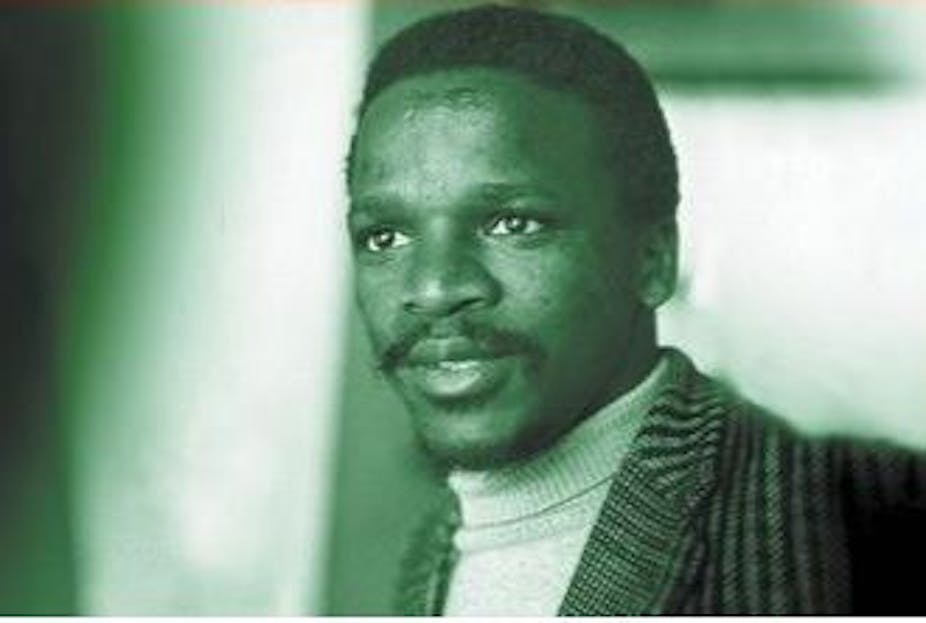The book, “Parcel of Death”, is a journey to a revolutionary past. It is a journey but not a return to the past. Former journalist Gaongalelwe Tiro has written a book about his uncle Onkgopotse Tiro – a revolutionary spirit who powered the student uprisings of June 1976 in Soweto, Guguletu – Cape Town, Port Elizabeth, Umlazi – Durban, Bloemfontein and Pietermaritzburg.
It is the same spirit that was to galvanise another generation decades later in the fees must fall and decolonisation movements at the turn of the century.
Tiro was a student leader at the University of the North, now University of Limpopo, in the early 1970s and one of the early exponents of the revolutionary Black Consciousness Movement in South Africa. He fled to exile in Botswana, where he was killed by a parcel bomb in 1974. It has always been suspected that it was sent by the apartheid security forces.
The book begins with a chapter entitled: “Blown to Smithereens”. The power and emotion contained in this chapter is enough to stop you from continuing. Even though I know the events that are described in the chapter and, had my own emotion and response on the morning of the day in February 1974 when the news of Tiro’s assassination came through, I still read the chapter over and over and hesitated to face up to subsequent chapters.
Onkgopotse Tiro
Onkgopotse Tiro was born in Dinokana Village outside the small town of Zeerust, in what is now known as the North West Province, South Africa. These origins automatically define him as son of poor parents.
Like other African young men and women, Tiro somehow managed to make it to university. For him, being of a particular tribal origin, it could only be University of the North, also known as Turfloop, a blacks-only university for students designated for the Tswana, Sotho, Pedi, Venda and Shangaan tribes, located east of Polokwane. This, in line with the Apartheid racist segregation policies of the white minority state of the time.

The family and social background and experiences that Onkgopotse brought to the university immediately came into conflict with the colonial and racial texture inscribed in every facet of the university life. The critical, questioning mind of the soon to be born philosophy of Black Consciousness soon showed its real character when Tiro and other black students immersed themselves in debates about how they should organise themselves around their own reality, black reality.
Political existentialism was the core mark of the strategy of black resistance by university students in those early days of black consciousness. Tiro was a key leader in this regard and, this is how this revolutionary edge catapulted him to the helm of student political organisation.
The anger of the white racist administrators and staff at the university and on behalf of all other white racists was provoked beyond measure when Tiro delivered a graduation speech in 1972, that ignited black student political uprising throughout the land.
Thus in the first chapter the author details the events preceding, surrounding and, following the assassination of Tiro. The book depicts how Tiro’s time at Turfloop amounted to a revolutionising political script for generations to come. It is particularly helpful to have this history of the Black Consciousness Movement which provides background to the later assassination of Steve Biko, who similarly died brutally at the hands of agents of a white racist regime.
The message is simple: White supremacists murdered Onkgopotse Tiro. They also murdered his associates, Mthuli Ka Shezi, Mapetla Mohapi and Steve Biko. The list is long.
Students of Black Consciousness need to grasp this in order to understand the movement and the people that Tiro died for. Deliberately, or not, the author’s choice of the starting point for the biography of his late uncle is inspired by the same spirit that shook the foundations of a racist settler-colonial regime.
The rest of the book walks back to the events that led to Tiro’s assassination. It is a biography that refuses to engage in political narcissism. Its story comes back to us from the future. We understand who Tiro was through the lens of what happened long after he was no more.
It is well written and does not confuscate, not even politically or ideologically. Through the chapters that follow the first one, we come to meet and know the people who gave birth to a movement and died for a country. We also come to understand how relationships change even among the closest of comrades. Readers will be served with the truth of events and intricacies that professional historians and ideologues conceal for no good reason.
The biographer is more than a family member. He is himself a player, activist and combatant in the theatre of struggle in which his uncle’s extinction was plotted and carried out. He navigates the terrain professionally and does so like a revolutionary.
The writer shares the initial circumstances that surrounded the moment of political ignition that led to expulsion of Tiro from the University of the North and set the country on fire. This discussion happens, rightfully, later in the book. It helps to remove the temptation to write the story chronologically. As we have said, the story of Onkgopotse Tiro comes to us from the future. For indeed, in his life story, to borrow from Karl Marx’s unforgettable words,
the phrase does not go beyond the content; the content goes beyond the phrase.
It is a story that draws its “poetry from the future”.
The book, therefore, shares snippets of the famous graduation speech that led to Tiro’s expulsion from Turfloop and subsequently galvanized black students in all the black campuses to solidarity action.
The rest is history.
The real pity, though, is that the biographer deprived the readers of Tiro’s speech in its totality. It is not enough to have quoted parts of it. It is a classic by itself and in its own right.

